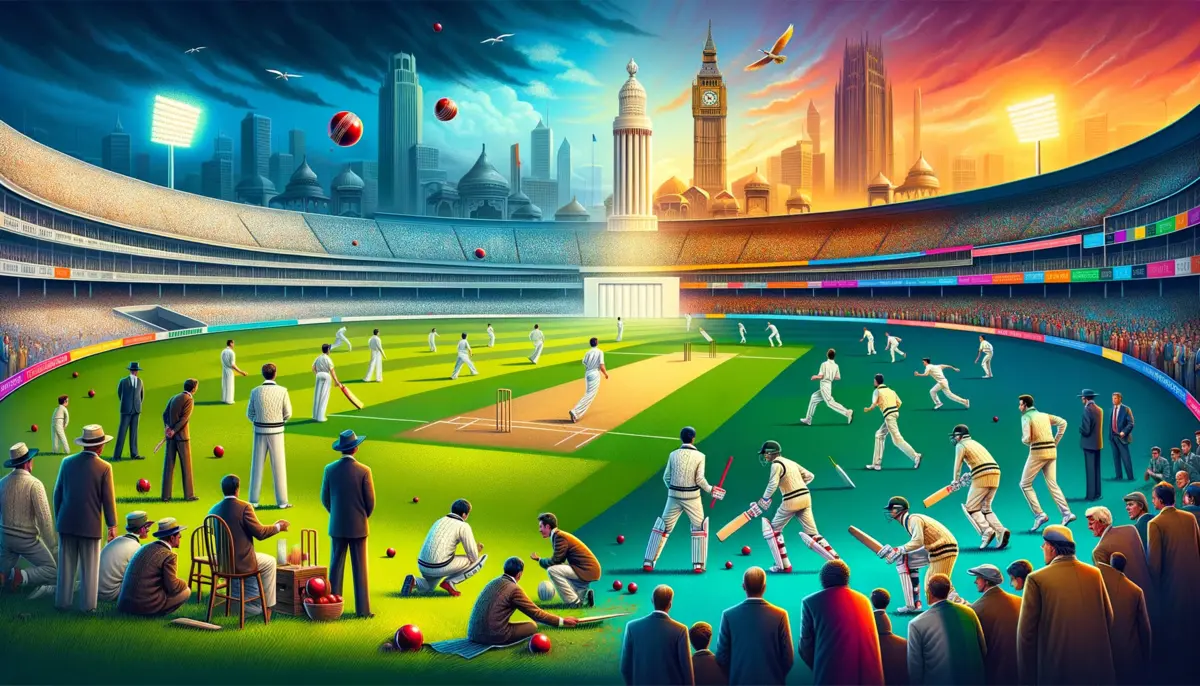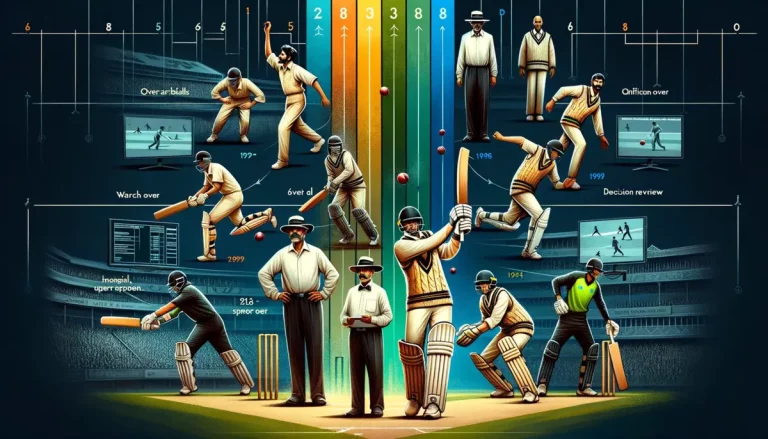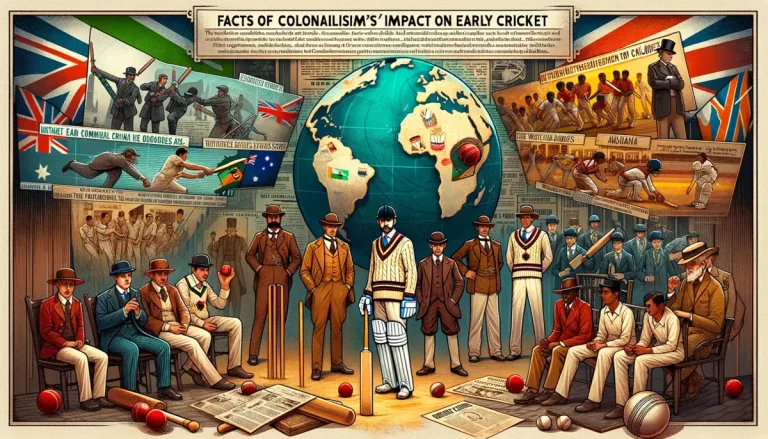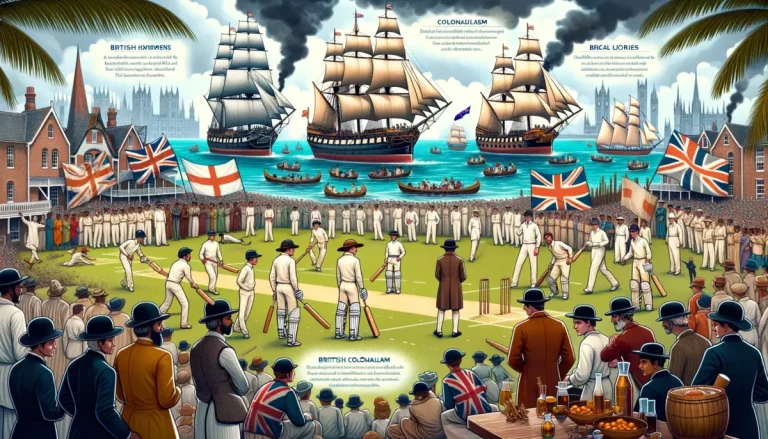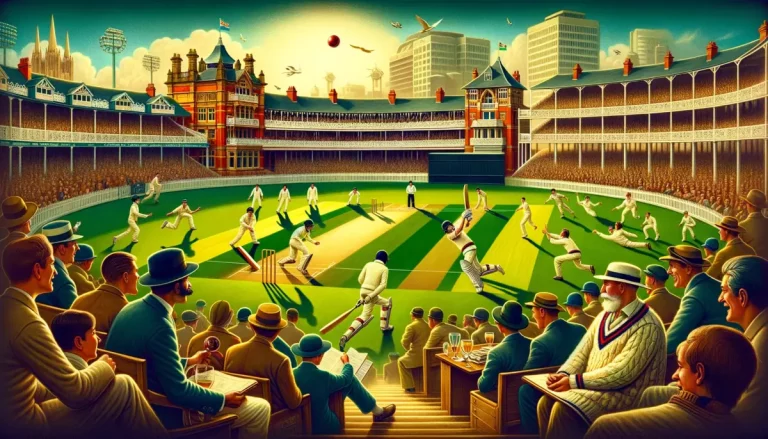Historical Development of Cricket Formats: From Origin to Now
Historical Development of Cricket Formats: From Origin to Now – Cricket, which started as a traditional game in 16th century England, has changed a lot over time.
Article Highlights
Hide- Cricket originated in the 16th century as a pastime among the upper classes in England.
- Test matches emerged during the 19th century, introducing new rules and technologies.
- One Day Internationals (ODIs) were introduced in 1971, changing player strategies and enhancing the visual appeal of the game.
- The introduction of the Twenty20 (T20) format attracted a wider audience, increased revenue, and encouraged aggressive batting and dynamic fielding.
Today, it’s a global sport with different ways to play that fans everywhere love to watch. In this article, we’ll look at how cricket has changed:
200% Welcome Bonus | SPRIBE
200% Welcome Bonus | SPRIBE
- Fastest Indian Rupees Withdrawals
- Win 1000x Bet Amount!
- 450% Bonus up to ₹1,000,000
- Starting with Test matches, the original form of cricket.
- Then, how One Day Internationals (ODIs) brought a shorter, one-day game.
- And lastly, the newest and fastest version, Twenty20 (T20).
Come along as we take you through the exciting history and changes in cricket over the years.
Origins of Cricket
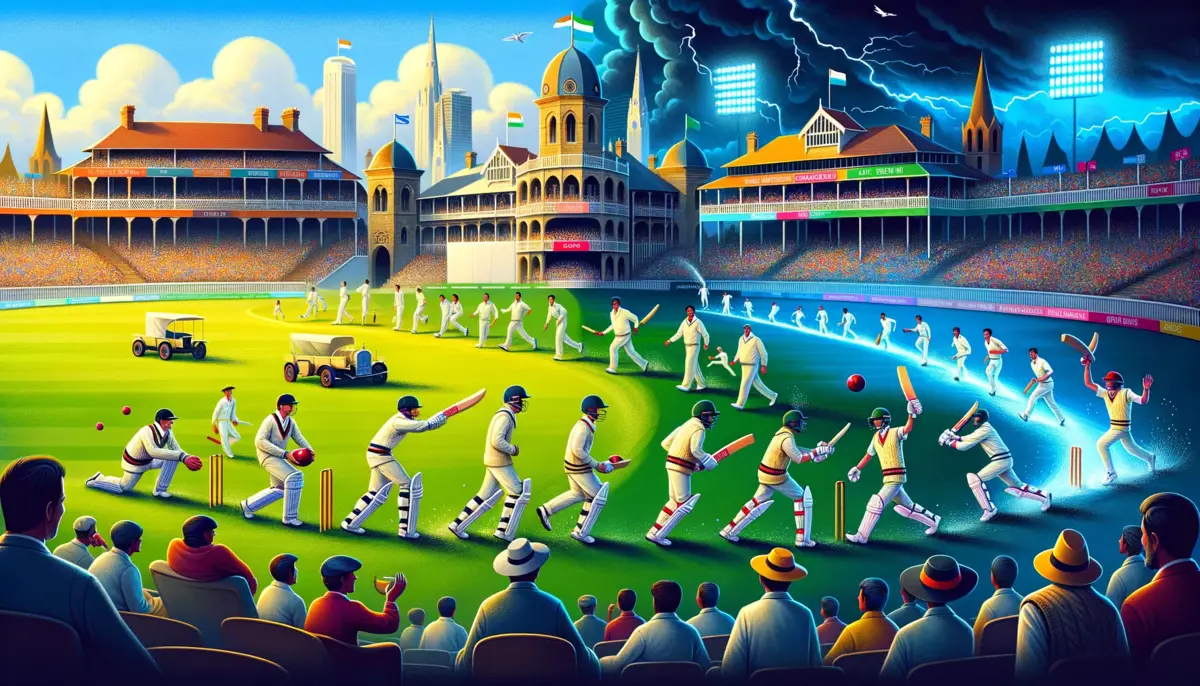
Cricket, a sport with origins dating back to the 16th century, began as a popular pastime among the upper classes in England.
Its origins can be traced to various cultural influences, including medieval games such as ‘stoolball’ and ‘club-ball,’ which involved hitting a ball with a stick or a club.
These early games laid the foundation for the development of cricket, with their rules and gameplay serving as precursors to the modern sport.
10 Greatest Cricket Matches of All Time in History
10 Greatest Cricket Matches of All Time in History – Cricket has seen some matches that are ... Read More
In the 17th century, cricket started to evolve into a more organized sport. The first recorded match took place in 1646, and by the 18th century, cricket had become a national sport in England.
The early rules of cricket were not standardized, and each locality had its own variations. However, the basic objective of the game remained the same: to score runs by hitting the ball and running between the wickets.
The early gameplay of cricket was marked by a slower pace compared to the modern game. Matches lasted for several days, with breaks for lunch and tea.
The focus was on strategic play, with batsmen aiming to defend their wickets and score runs. The introduction of bowling techniques, such as overarm and roundarm, added new dimensions to the game.
Evolution of Test Matches
During the 19th century, the sport of cricket underwent significant changes, leading to the emergence of the format known as Test matches.
The evolution of cricket rules played a crucial role in shaping this format. In 1774, the introduction of the LBW (leg before wicket) rule added complexity to the game and encouraged the development of defensive strategies.
Gradually, more regulations were put in place, such as the introduction of overarm bowling in 1864, which enhanced the pace and skill of the game.
The impact of technology on Test matches cannot be overlooked. The advent of television and the introduction of the Decision Review System (DRS) have transformed the way umpires make decisions.
The use of slow-motion replays and ball-tracking technology has reduced human errors and added a new dimension to the game.
It has also brought about debates on the role of technology and its impact on the traditional spirit of the game.
As Test matches continued to evolve, they laid the foundation for the emergence of one day internationals (ODIs).
The desire to attract larger audiences and increase revenue led to the development of a shorter format that combined the excitement of limited overs with the strategic elements of Test cricket. This transition will be explored in the subsequent section.
Emergence of One Day Internationals (ODIs)
One significant milestone in the historical development of cricket formats was the emergence of One Day Internationals (ODIs).
ODIs revolutionized the game by introducing a shorter format, which allowed matches to be completed within a single day.
This format was first introduced in 1971 when England hosted Australia for the inaugural ODI match at Melbourne.
The impact of ODI cricket on player strategies cannot be understated. With limited overs and a fixed timeframe, players had to adapt their gameplay to score runs quickly and take wickets efficiently.
The introduction of power-hitting, innovative stroke play, and aggressive fielding became crucial elements of ODI cricket.
Batsmen started playing more aggressively from the beginning, and bowlers focused on variations and containment strategies to restrict the opposition’s run-scoring opportunities.
Technology played a vital role in the development of ODI matches. The use of television cameras, replay technology, and innovations like the Decision Review System (DRS) have enhanced the accuracy of umpiring decisions and added a new dimension to the game.
The introduction of white cricket balls, colored clothing, and floodlights further enhanced the visual appeal of ODIs, making it more spectator-friendly.
Introduction of the Twenty20 (T20) Format
The introduction of the Twenty20 (T20) format further transformed the game of cricket, bringing a new level of excitement and dynamism to the sport.
With matches lasting just around three hours, T20 cricket offered a fast-paced and action-packed version that appealed to a wider audience.
This format quickly gained popularity among the younger generation, attracting new fans to the game and injecting a fresh energy into cricket stadiums worldwide.
One of the major impacts of T20 cricket was on the cricket economy. The shorter duration of matches allowed for more games to be played in a shorter span of time, resulting in increased revenue from ticket sales, sponsorships, and broadcasting rights.
The fast-paced nature of T20 matches also attracted a larger television audience, leading to higher advertising revenues.
Moreover, the T20 format brought about significant changes in the way cricket was played. It encouraged aggressive and innovative batting, with players focusing on scoring runs quickly.
Bowlers had to adapt their strategies to restrict the opposition despite the batsmen’s attacking mindset. Fielding also became more dynamic and agile, with players diving and sliding to save runs.
Cricket in the Modern Era
Cricket’s evolution into the modern era has witnessed a transformation in playing styles and strategies, as well as advancements in technology and the global reach of the sport.
The impact of technology on modern cricket has been significant, revolutionizing various aspects of the game.
The introduction of technologies such as Hawk-Eye, Hot Spot, and Snicko has greatly improved decision-making and enhanced the accuracy of umpiring decisions.
These technologies have also added a new dimension to the viewing experience, allowing fans to analyze the game from multiple angles and gain a deeper understanding of the intricacies involved.
Furthermore, the commercialization and globalization of cricket have had a profound effect on the sport. With the rise of lucrative T20 leagues such as the Indian Premier League (IPL) and the Big Bash League (BBL), cricket has become a major source of revenue, attracting players from around the world and providing them with unprecedented financial opportunities.
This influx of talent has not only elevated the level of competition but also diversified the playing styles and strategies employed by teams.
Moreover, the globalization of cricket has expanded its fanbase to new regions, particularly in countries like India, Pakistan, and Bangladesh, where the sport enjoys immense popularity.
The increased accessibility of live broadcasts through television and online streaming platforms has further contributed to the sport’s global reach, allowing fans to follow their favorite teams and players from anywhere in the world.
Up to 75% Reload Bonus on Aviator
Up to 75% Reload Bonus on Aviator
- Easy Sign-Up and Deposits
- Win 1000x Bet Amount!
- 450% Bonus up to ₹1,000,000
Final Takes
In conclusion, the historical development of cricket formats has evolved from its origins to the present day. It began with traditional Test matches, followed by the emergence of One Day Internationals (ODIs), and later the introduction of the Twenty20 (T20) format.
These changes have brought about a transformation in the game, catering to different preferences and audiences. Cricket continues to adapt and thrive in the modern era, remaining a beloved sport worldwide.

